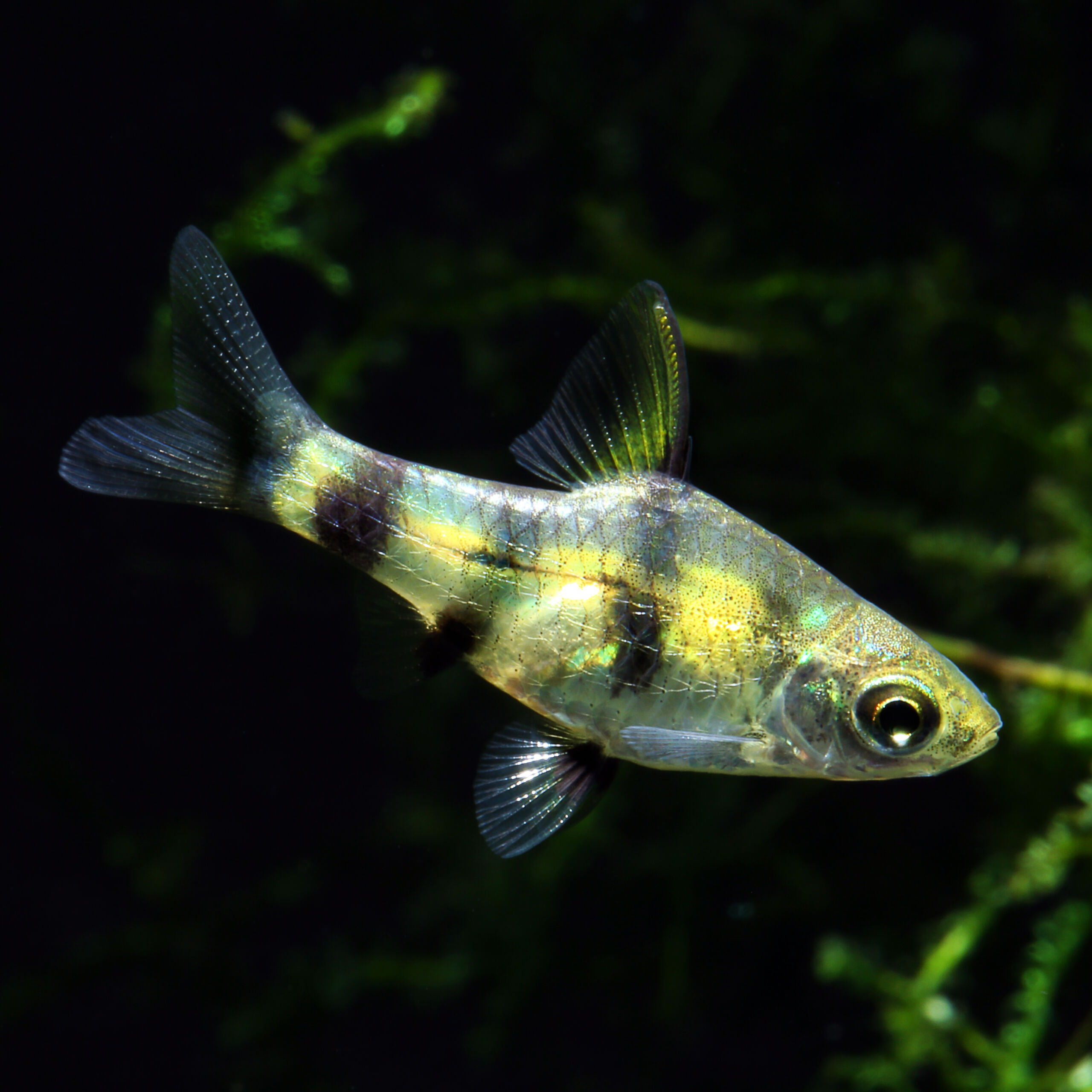Golden Dwarf Barb
Pethia gelius
The Golden Dwarf Barb is a small schooling fish from Asia, which delights with its simple but beautiful coloring.
- pretty schooling fish
- golden yellow to silvery coloring
- very peaceful
1 in stock
 Lieferung in wenigen Werktagen
Lieferung in wenigen Werktagen
 Kostenloser Versand ab 60€
Kostenloser Versand ab 60€





Important data
Product description & details
Pethia gelius (syn. Puntius gelius), also known as Golden Dwarf Barb, is an approximately 4cm long freshwater fish from Asia, which is found in Pakistan, India and Bangladesh. Its natural habitat is mainly rivers and stagnant bodies of water with muddy bottoms. In terms of color, this pretty fish is characterized by a silver to golden-yellow body color, which can shimmer metallic green, blue and orange-red in the light, as well as large black spots on the yellow-colored fins and on the body.
Care in the aquarium
The Golden Dwarf Barb can be classified as easy to keep. As a schooling fish, it wants to be kept in a group of at least 10 animals. It also needs dense background and edge plants to feel comfortable and safe. However, care should be taken to ensure that the Golden Dwarf Barb has enough swimming space. An aquarium with an edge length of 60 cm (54 liters capacity) is the minimum. The water should be soft and not too warm. A temperature between 18 and 24°C is considered optimal. Adding humic substances through leaves, peat or alder suppositories is ideal and promotes the health of the fish. In the community tank it can be kept very well together with peaceful fish of approximately the same size, such as dwarf cory catfish or dwarf gourami.
Feeding
In nature, the Golden Dwarf Barb feeds primarily on small insects and their larvae as well as small aquatic creatures such as crustaceans and worms. The barb, which is therefore primarily carnivorous (meat-eating), also enjoys live and frozen food in the aquarium, such as artemia, daphnia or white mosquito larvae, but fish food suitable for small tetras and barbs is also readily accepted.
Sexual characteristics and breeding
With a final size of approx. 2.5-3cm, male Golden Dwarf Barbs remain smaller and a little bit slimmer than the up to 4cm long, slightly fuller females. Breeding this beautiful barbel in the aquarium is considered difficult. The willingness to spawn can be increased by giving more live food. Females lay their eggs on the underside of plant leaves with their abdomen facing upwards. As is typical for open spawners, no brood care is subsequently carried out. The fish larvae can initially be fed with dust food and infusoria and a little later with newly hatched Artemia nauplii.





